On 24 September, Lenovo-owned Motorola announced the new One Power smartphone, which is their first Android One device. The smartphone is also the first by the company that has been made exclusively for the Indian market. [caption id=“attachment_5246521” align=“alignnone” width=“1024”]
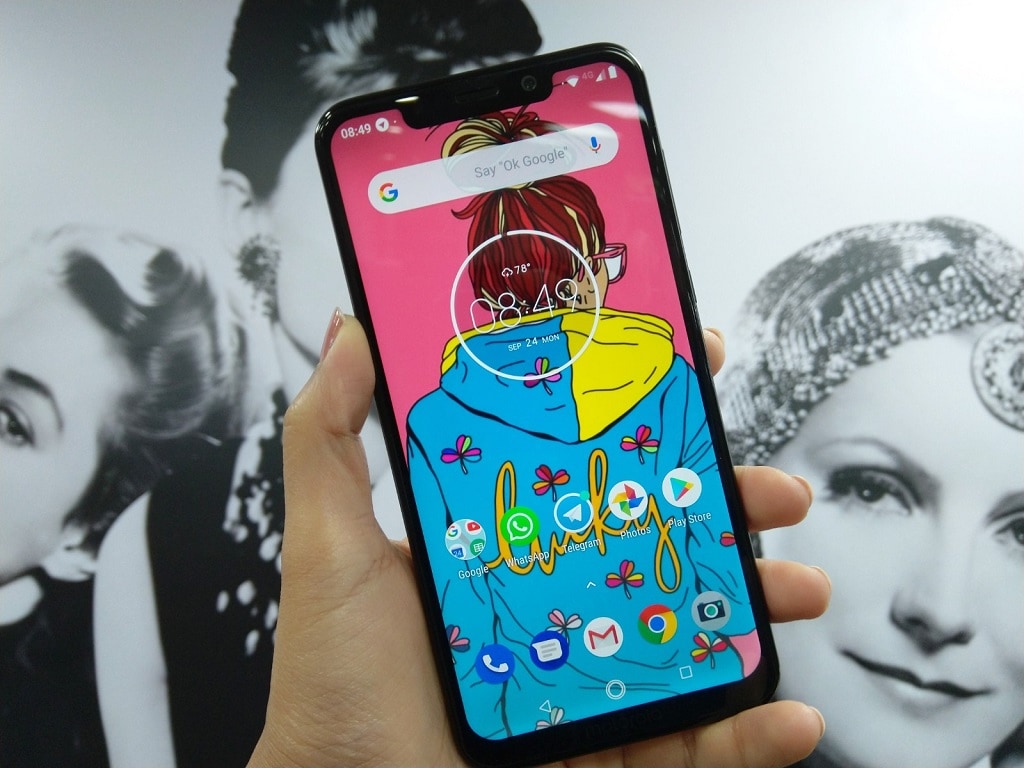 Motorola One Power features a 6.2-inch display. Photo: Tech2/Nandini Yadav[/caption] In a personal conversation, a Motorola official acknowledged that while its offline Moto Hub stores have been doing very well, in the last one year, they have received a lot of flak from the online consumer base. So, Motorola took all the feedback from its past product cycles, made notes of what the users were longing for, and tried to bring that together into the Motorola One Power. Motorola understood two crucial learnings from their its research: one was that consumers hate charging their phones constantly and two, they want their phones to remain up to date with the newest operating system. And so, the Motorola One Power offers a ginormous 5,000 mAh battery, promises quick upgrades for the next two years, and monthly updates for the next three years. The Android 9.0 Pie upgrade for the phone is also scheduled for the end of 2018. But, is that enough to make the Motorola One Power the redemption device for the company’s online consumer base? Will it really address the needs of an average smartphone user? Is it worth it? I would say the device does deliver on the promise of being your daily driver thanks to the large battery capacity which will easily last you for two days. If you are a photography enthusiast, you can give the One Power a miss as it has an average camera. To find the answers to other aspects of the Motorola One Power, here is the detailed review. Build and Design: 8/10 The Motorola One Power has an absolutely sturdy build with a metal back. The phone features the fingerprint sensor on the back, and very interestingly the Moto logo sits inside the ring of the sensor. The camera setup on the back is in a vertical orientation, similar to what we have seen on the iPhone X and its clones such as the Redmi Note 5 Pro and many other Xiaomi phones. The back of the phone is nicely curved so that holding the device is easy, even with my tiny hands. [caption id=“attachment_5246821” align=“alignnone” width=“1280”]
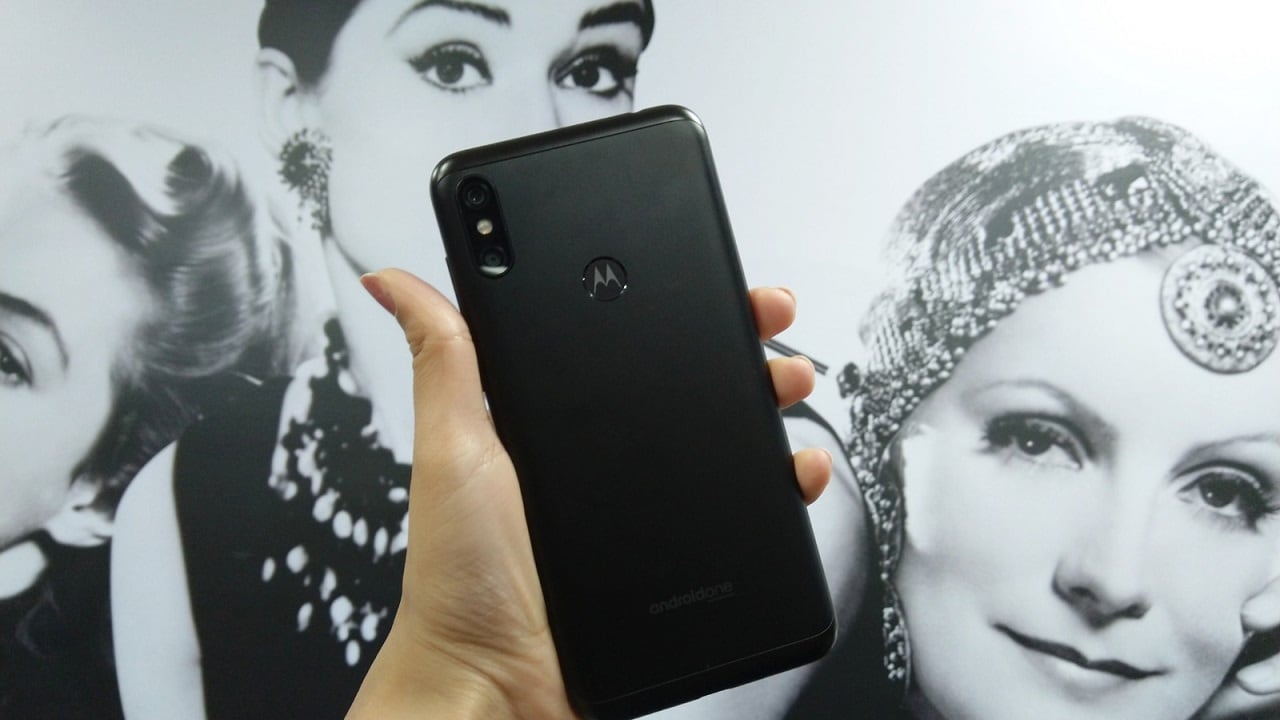 The Motorola One Power has a dual-camera setup at the back and a metal body. Photo: Tech2/Nandini Yadav[/caption] The volume rocker and the power button on the Motorola One Power both sit on the right edge. The stereo speaker and the Type-C port sits at the bottom edge, while the 3.5 mm jack is on the top. On the left-hand side of the phone, you have the hybrid dual SIM tray, which can take in either two nano SIM cards or one nano-SIM and one microSD card. There’s also a notch upfront, along with a centimetre wide bezel at the bottom. The notch houses the front camera, an LED flash and the earpiece speaker, along with a proximity sensor. [caption id=“attachment_5247391” align=“alignnone” width=“1280”]
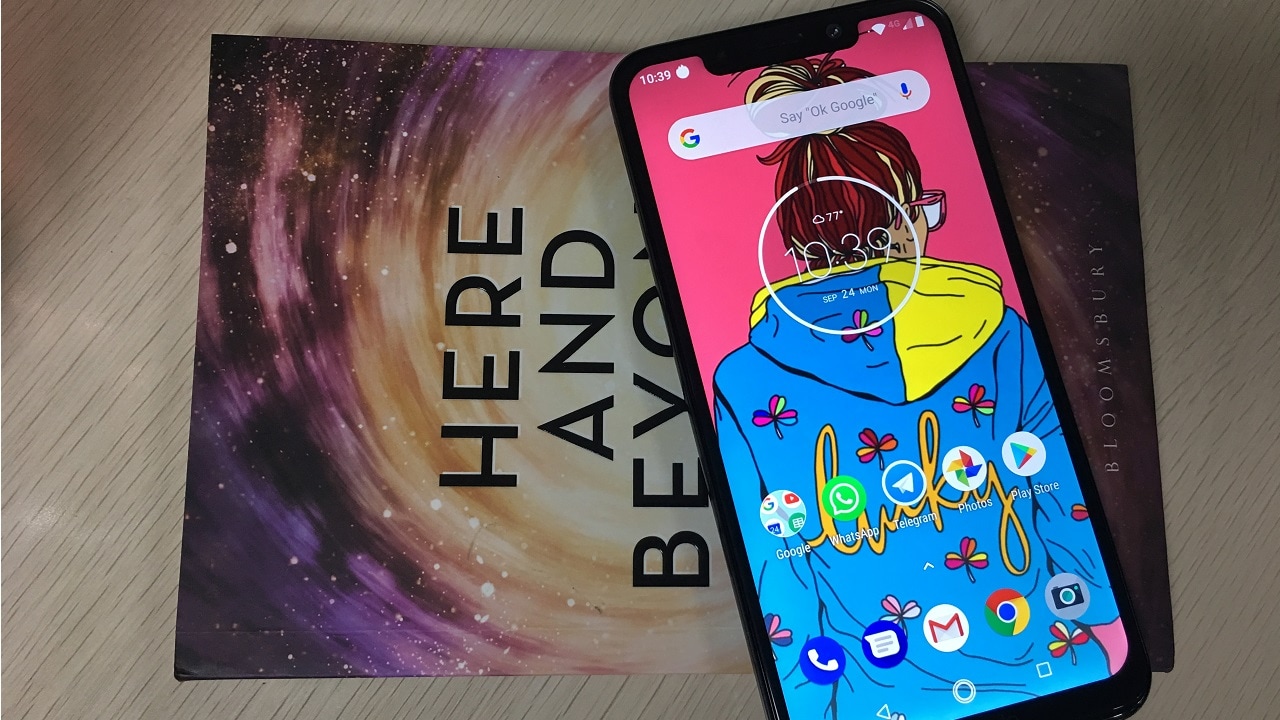 Motorola One Power features a 12 MP camera at the front.[/caption] The only thing that could be a put off when you pick up the phone the first time, could be its weight — 205 gm. However, in the review period that I was using the Motorola One Power as my primary device, I did sort of got used to the weight. But I was reminded of it every time I held anybody else’s phone in my hand, like the iPhone 8, Moto G5, or the Xiaomi Mi A1. Having said that, you tend to ignore the weight of the phone, when you realise, that massive 5,000 mAh battery fits inside it. Expecting such a huge battery capacity in a light-weight phone is asking for the moon. Features: 8/10 The Motorola One Power features a 6.2-inch FullHD+ IPS display, with a resolution of 1,080 x 2,246 pixels. Under the hood, it is powered by a Snapdragon 636 SoC, which has an octa-core processor, with one quad-core cluster clocked at 1.61 GHz, and the other quad-core cluster clocked at 1.80 GHz. The chipset is accompanied with 4 GB of RAM and 64 GB of internal storage, which can be extended to 256 GB using a microSD card. [caption id=“attachment_5246861” align=“alignnone” width=“1280”]
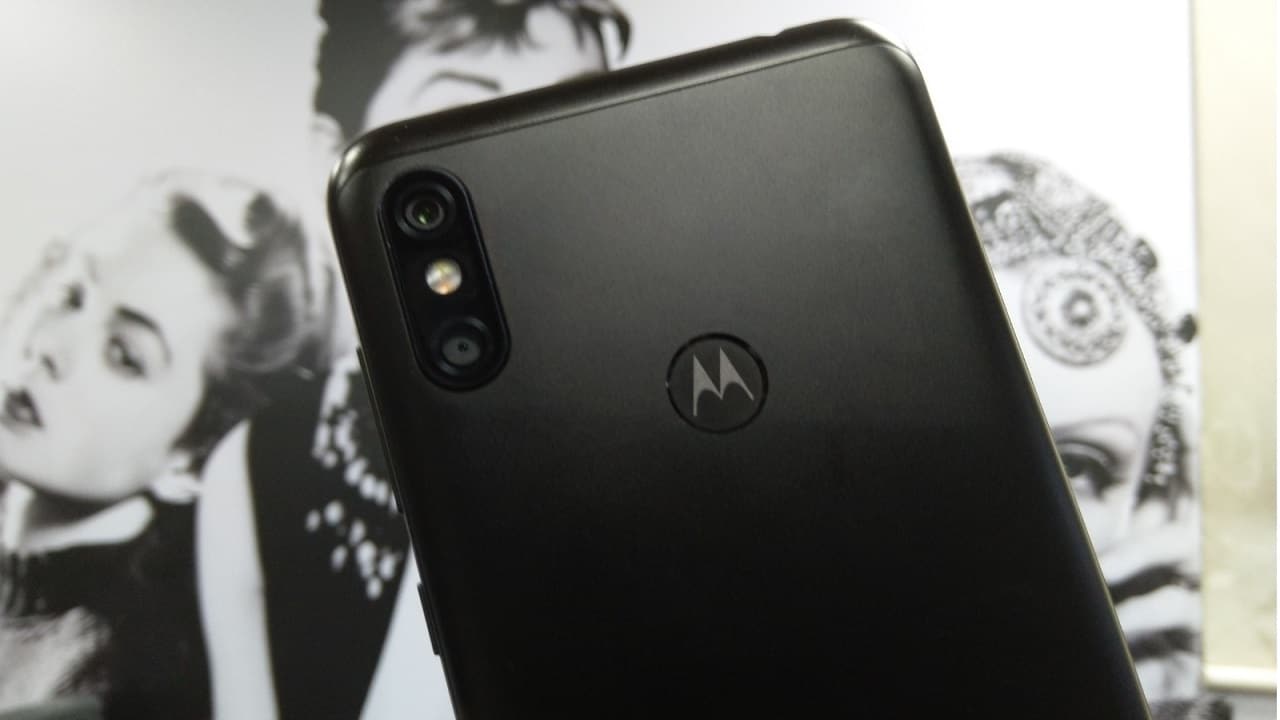 Motorola One Power sports a 12 MP + 5 MP camera setup at the back. Photo credit: Tech2/Nandini Yadav[/caption] For photography, the Motorola One Power sports a dual-camera setup at the back, which is a combination of a 16 MP PDAF sensor with an f/1.8 aperture, and a 5 MP depth sensor with f/2.2 aperture. The rear camera also features a dual-LED dual-tone flash. The smartphone’s rear camera also supports 4K video recording at 30 frames per second, and FullHD videos at 30/60 frames per second. Up front, is a 12 MP camera sensor, with an f/2.0 aperture for selfies. The Motorola One Power runs Android 8.1 Oreo (Android One) operating system and is fuelled by a massive 5,000 mAh battery, with support for Moto’s own Turbo Charge technology. For connectivity, it includes features like Wi-Fi 802.11 a/b/g/n/ac, dual-band, WiFi Direct, hotspot, 3.5 mm jack, USB 2.0 Type-C connector, Bluetooth 5.0, and FM Radio. Display: 7/10 The Motorola One Power features a 6.2-inch FHD+ display, which has 81.7 percent screen-to-body ratio and an 18.7:9 aspect ratio, with a pixel density of 402 PPI. The display of the Motorola One Power is quite crisp and bright. It has a slight blue tint to it, but the colour accuracy is very good. Photos and videos look great on the display, and I enjoyed gaming on the phone. The One Power also supports HD videos on Netflix. [caption id=“attachment_5246561” align=“alignnone” width=“1280”]
 Motorola One Power’s highlight is it’s stock Android OS, and the massive 5,000mAh battery. Image credit: Tech2/Nandini Yadav[/caption] The phone has a centimetre wide chin, along with a thin strip of bezels on the side and a notch on top. Unless you are using the device in a full display mode, you can see the navigation bar pile up on top of the phone’s chin, that together takes up a lot of the display real estate. Besides that, the phone’s display adjusts well to ambient light. Even in bright light conditions, the display remains aptly bright. In the dark as well, the display is bright enough to be visible, and not too bright to hurt your eyes. Software: 8/10 The Motorola One Power runs Android 8.1 Oreo, with Google’s Android One program. Which means, the user interface is neat, clutter-free, and isn’t plagued with all the bloatware. The phone comes only with the basic Google apps and the software experience is very sorted and smooth. [caption id=“attachment_5246931” align=“alignnone” width=“1280”]
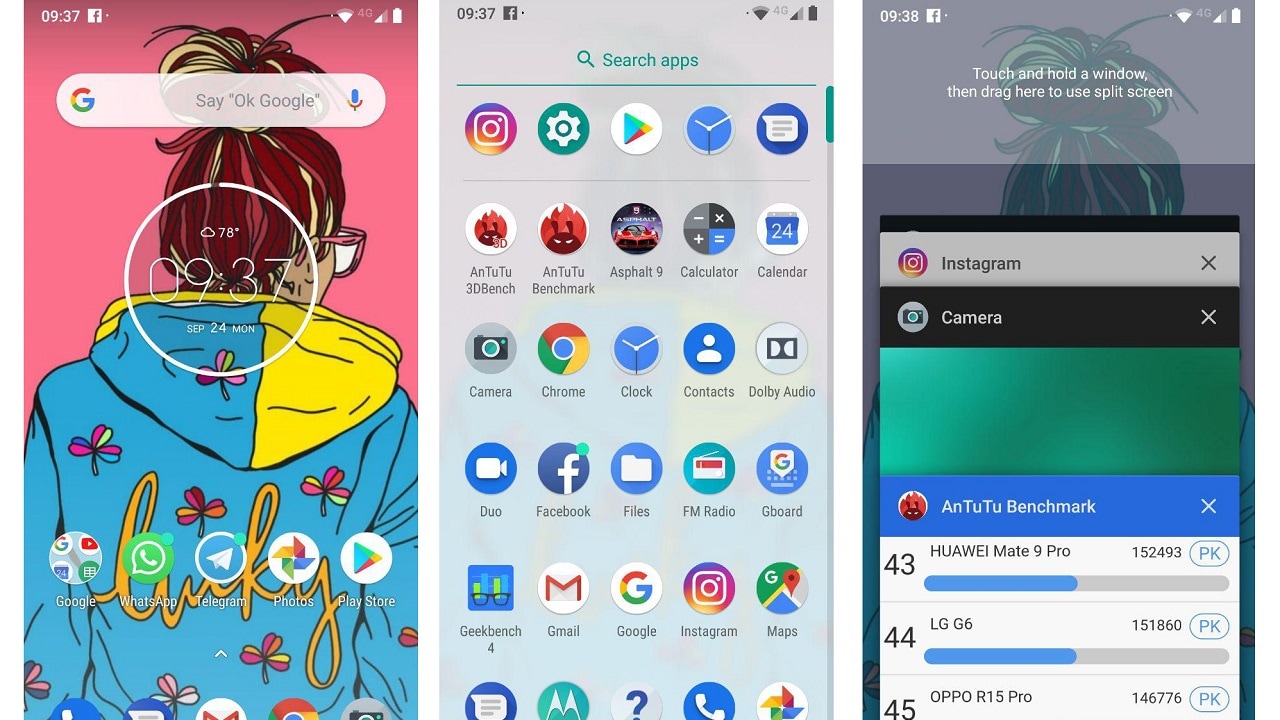 The Motorola One Power runs stock Android 8.1 Oreo operating system.[/caption] Also adding to the phone’s experience is the deep Google integration, where your regular albums app is replaced with Google Photos, and the Google Lens is clubbed into the phone’s camera app so that you don’t actually have to switch apps to use Google Lens. You can just tap this Lens icon on the camera app, that sits on the bottom right corner. [caption id=“attachment_5268141” align=“alignnone” width=“1280”]
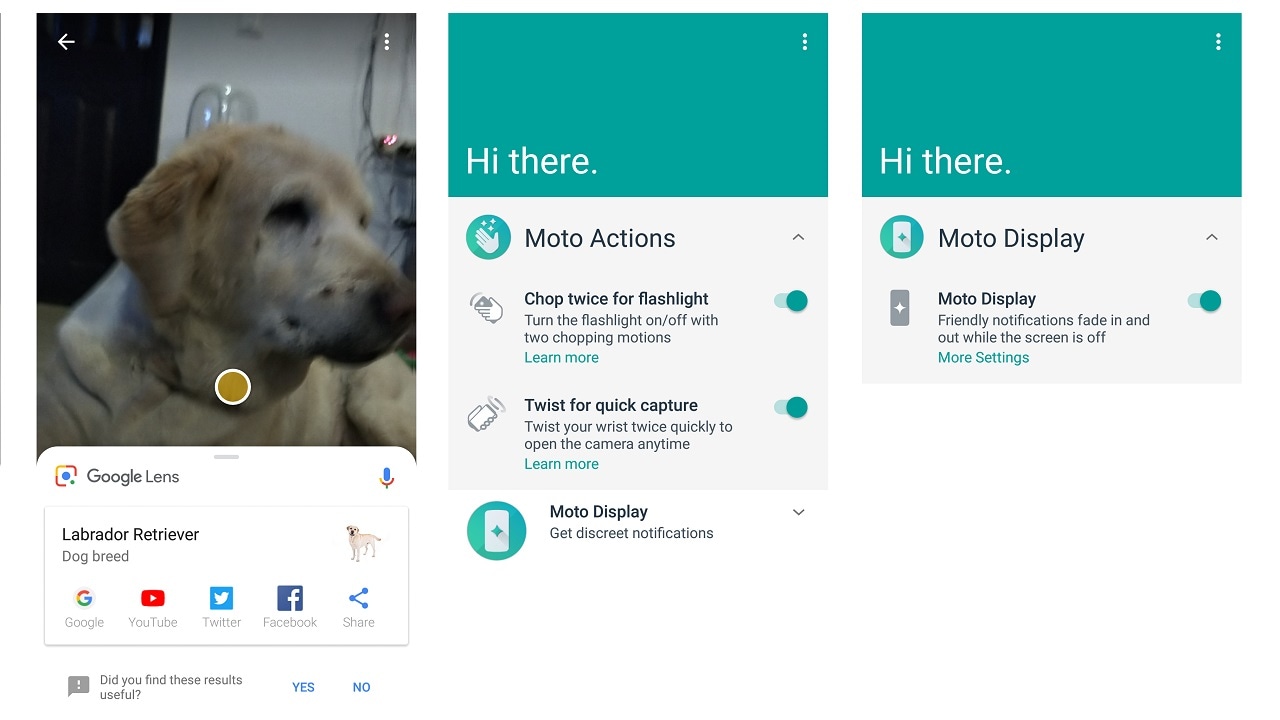 From left to right: Google Lens, Moto Actions, and Moto Display shortcuts.[/caption] The software experience is also made better with the Moto Assist features. There is a new Moto Display mode that has been added, which basically replaces the notification LED with soft notifications on your display, while the screen is off. There are also Quick Reply shortcuts that you can enable, that will let you respond to messages without unlocking the device. The Moto Gestures too are so much fun. There One Power has the signature Chop Chop for flashlight and Twist for camera gestures. Performance: 7/10 While benchmarks are not the best indicators of a device’s performance, (especially now that we have seen some brands tampering with them ), if we use the benchmarks as one of the ways to compare, the Motorola One Power seems nowhere in the league. The Xiaomi Redmi Note 5 Pro and the Pocofone F1 seem to be much ahead. [caption id=“attachment_5247431” align=“alignnone” width=“1280”]
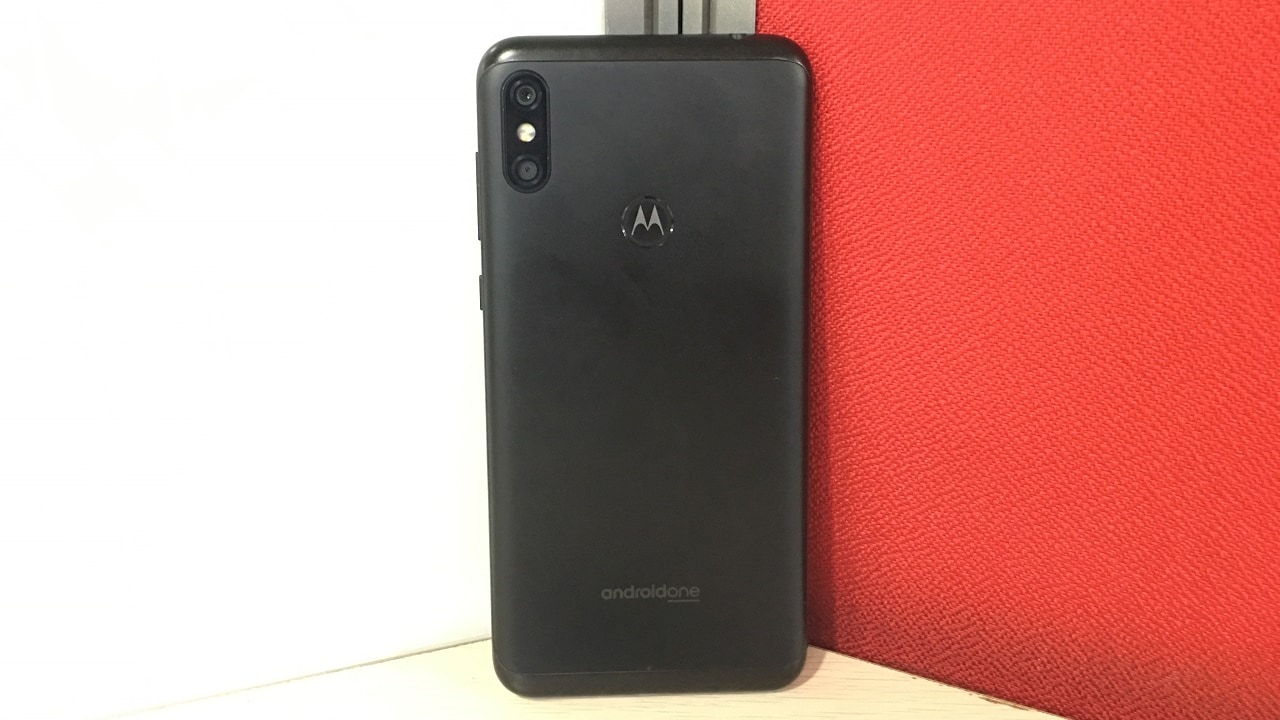 Motorola One Power is powered by Snapdragon 636 chipset. Photo Credit: Tech2/Nandini Yadav[/caption] However, in my experience, I did not face any real issues with the smartphone. There was absolutely no lag and switching between apps was smooth. I am a sucker for social media apps, and I am constantly shuffling between Instagram, Twitter and YouTube, and I have nothing to complain about that experience.Even while playing games such as Asphalt 9: Legends, Alto’s Odyssey and Subway Surfers I did not notice the phone heating up or there being any drop in framerates. The graphics and textures seemed pretty crisp too. [caption id=“attachment_5247541” align=“alignnone” width=“1280”]
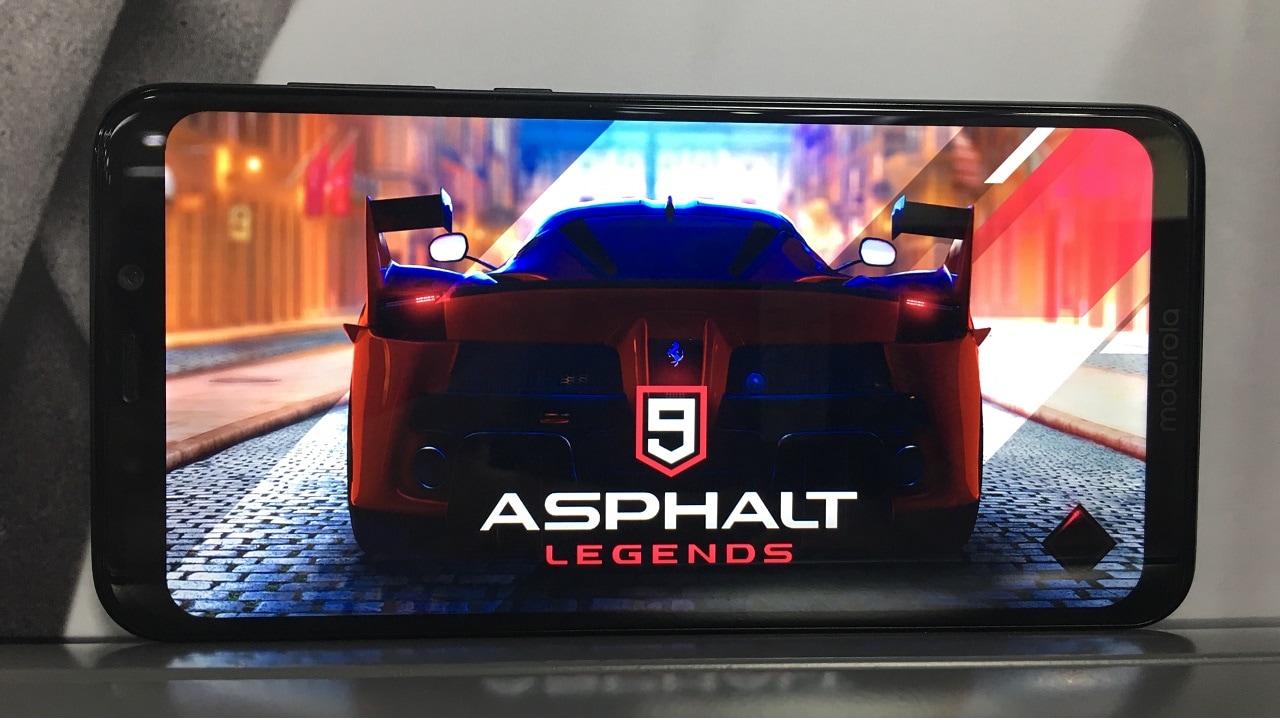 We tested the Motorola One Power with the Asphalt 9.[/caption] The call quality on the device is good and the phone comes with a pretty loud and clear speaker, which is powered by Dolby Audio. You also get your own Dolby Audio app on the phone, which is like your own little deck for adjusting audio. Camera: 7/10 The Motorola One Power comes with a dual rear camera setup. You get a 16 MP primary camera with an f/1.8 aperture and a 5 MP depth camera with f/2.2 aperture and on the front, you have a 12 MP selfie camera. While that sounds great on paper, it’s kind of disappointing when tested practically. In my time with the phone, I found the camera to be just about decent. The images clicked in the day are bright, and have good colours but they lack sharpness around the edges. In short, they seem pretty average. But when you look at images clicked in low light, they are nothing but dull and disappointing. If you look at the pictures clicked from the phone embedded below, you would see how the images short using the primary camera miss out on the details. For instance, in the picture of my dog, the image has no sharpness in the middle, and the focus on the subject is just too soft. There is also plenty of noise in the picture that you can see in the image below and the subsequent low light images in the slideshow. The selfie camera is also strictly average. It performs well if the natural light is bright and lights up your face, but the camera doesn’t seem to do much. The selfie camera comes with a portrait mode that’s AI-powered. Which means, it first clicks your picture and then adds a blur to the background, the strength of which you can choose from the settings. When you select the portrait mode option, it automatically asks you to choose the strength of the blur on a scale of 1 to 10. However, when you select level 4 or higher, the blur looks very artificial. The edge detection is also not very good and doesn’t detect the edges of your face and your hair.
 From left to right - Selfie with a portrait mode, the regular mode (with zero beautification), and a selfie at night. Shots taken at night, aren’t too great either. First of all the phone takes too long to focus during the night time (see the image embed below, and then swipe to left for the rest of the gallery). Images also tend to lose sharpness in the middle when clicked during the dark. With the flash switched on, the images showcased better colours and did not turn out noisy. The videos taken from the phone are again good in the daylight, with bright colours, and a balanced sharpness. However, at night, the smartphone is barely able to capture the colours. The camera sensors on the phone doesn’t feature an optical image stabiliser, however, it does let you stabilise the video once you have shot it. To do that, you just have to head to your gallery, hit the edit button and there you will see an option to’stabilise’ or rotate your image. It makes just a wee bit of difference, though.
(Click on the images to view the slideshow of all high res images clicked from the Motorola One Power.) The camera is the Motorola One Power’s Achilles’ heel. If you look at One Power’s competitor
**Redmi Note 5 Pro** , in the same budget the Xiaomi phone offers much better camera performance. Battery: 9/10 The phone really charms you when you go on using the phone and the battery doesn’t seem to die on you (like everything else in the world does). During the launch of the phone, Motorola was pretty confident about the smartphone’s battery, and after days of testing it, I can confidently say, that nobody can take that from them. I tested the phone’s battery in all sorts of ways. [caption id=“attachment_5247411” align=“alignnone” width=“1280”]
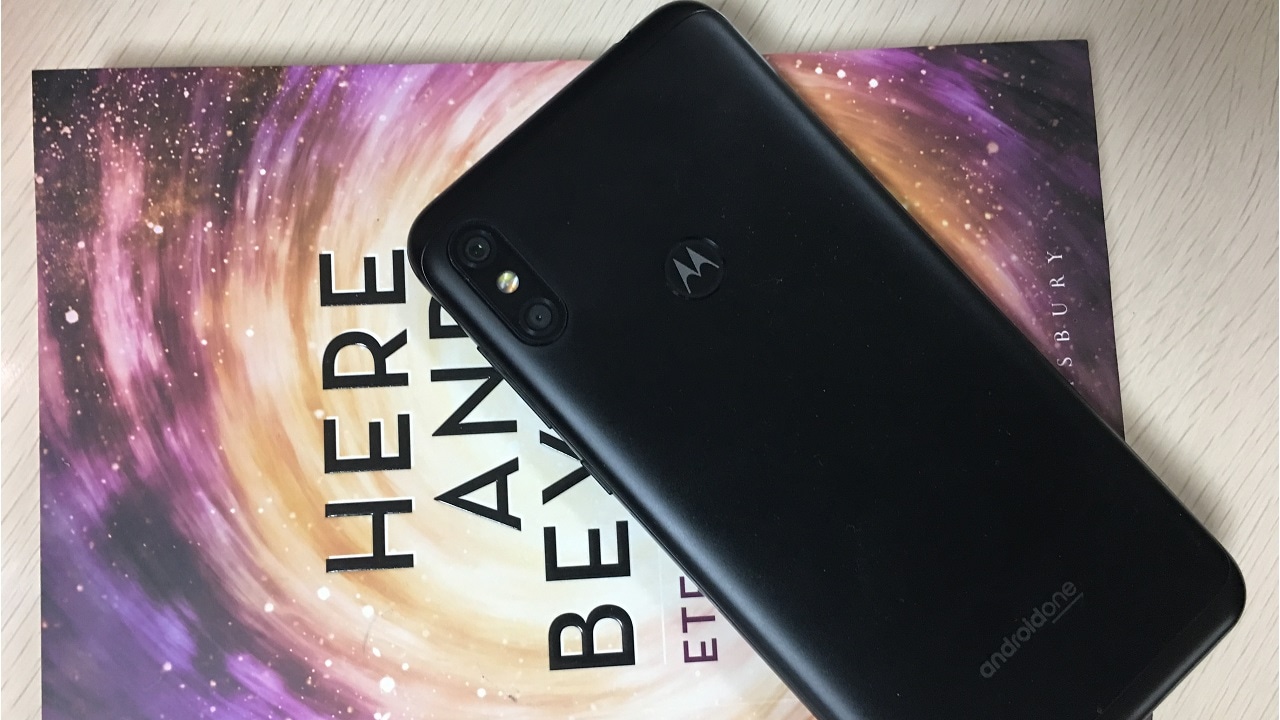 Motorola One Power sports a 5,000mAh battery. Photo Credit: Tech2/Nandini Yadav[/caption] On a turbo charge, the phone takes up about an hour and 10 minutes to fuel up to 100 percent, and on a regular usage (which for me means switching like a maniac between multiple apps like WhatsApp, Instagram, Twitter, YouTube, Telegram and Slack). Sharing this might put my job in danger, but I feel this weird compulsion to check my Insta after every 15 minutes, because in my head I am a celebrity, and I don’t want to disappoint my fans. And I am sharing that detail so you know how often I am using these apps. With that heavy social media use case, a single charge lasted me for two and a half days. I also tested the battery by playing games like the Asphalt 9: Legends, Alto’s Odyssey, The Sims, Real Racing 3, and Subway Surfers constantly for about 90 minutes, and it was impressive how the battery didn’t drain drastically. Of course, there was a drop, but it was gradual and absolutely acceptable. The PCMark Work 2.0 Battery Life test also showed a brilliant 18 hours and 22-minute performance. I really have nothing to complain when it comes to One Power’s battery. Verdict and Price in India The Motorola One Power is priced at Rs 15,999. It will be available for purchase starting 5 October and will be sold exclusively on Flipkart. But, coming back to the questions I began this review with: Is this the redemption device for Moto? Well, the Motorola One Power stands head-on against the
**Xiaomi Redmi Note 5 Pro** . The One Power would have had the lead if it had a better camera. The Redmi Note 5 Pro excels when it comes to camera, display and many other things which give it an edge over the Motorola One Power. But if the camera is not really your concern and you really want a long lasting device, then the Motorola One Power comes recommended. Does it address the needs of an average smartphone user? Except for the camera, it totally does. It has a ginormous battery, that lasts you for good two days. It has a clutter-free stock Android OS with a promise of regular updates. The last few generations of Motorola phones have been very haphazhard with security and software updates. With the Motorola One Power being part of the Android One program, we should expect quicker updates, which is always a good thing.
With 5,000mAh battery under the hood, the Moto One Power is an absolute powerhouse.
Advertisement
End of Article


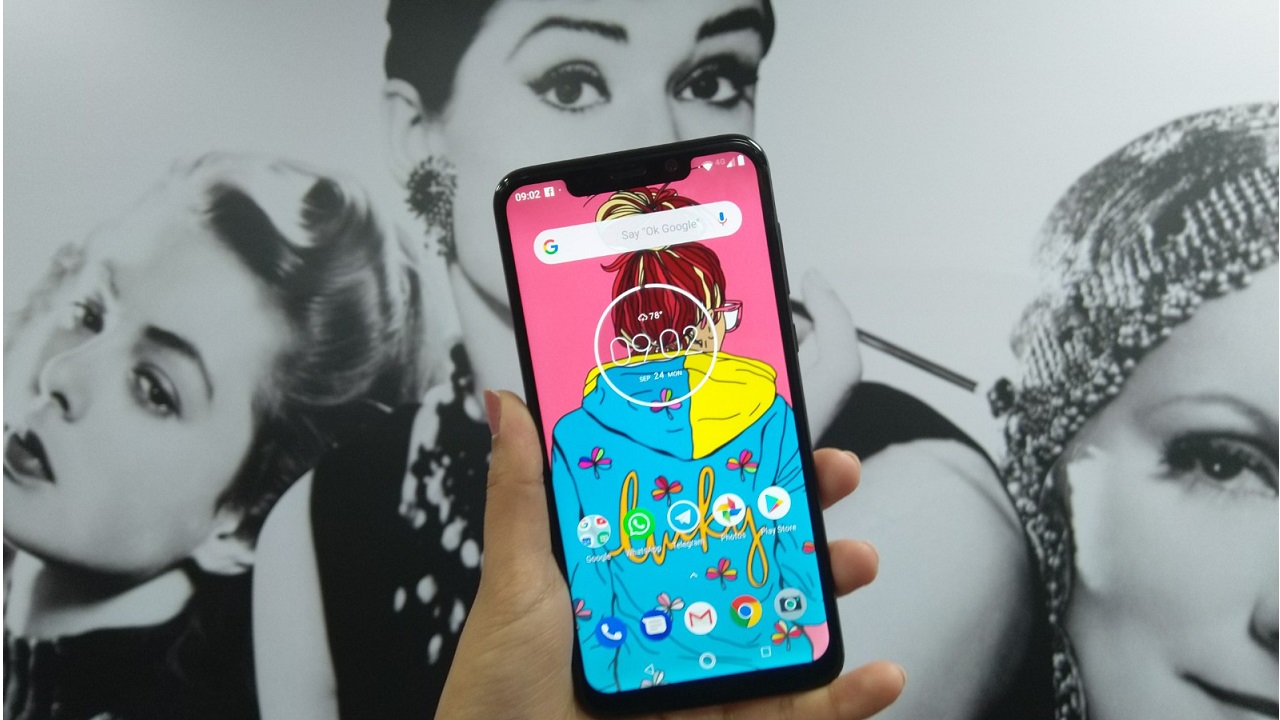)
)
)
)
)
)
)
)
)



